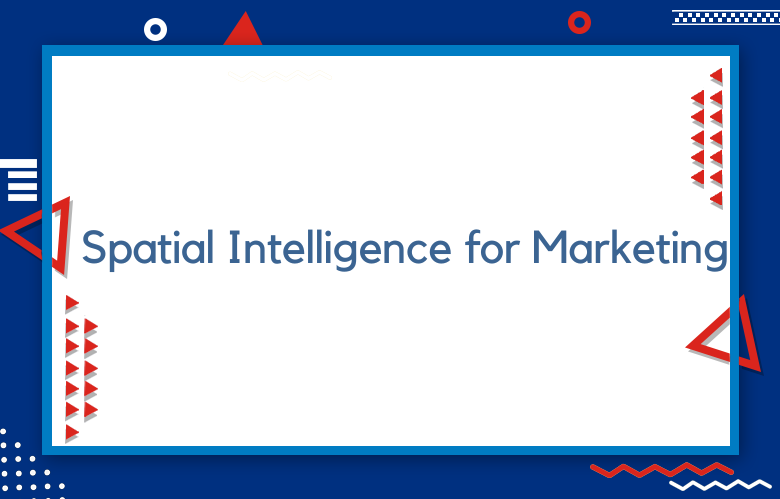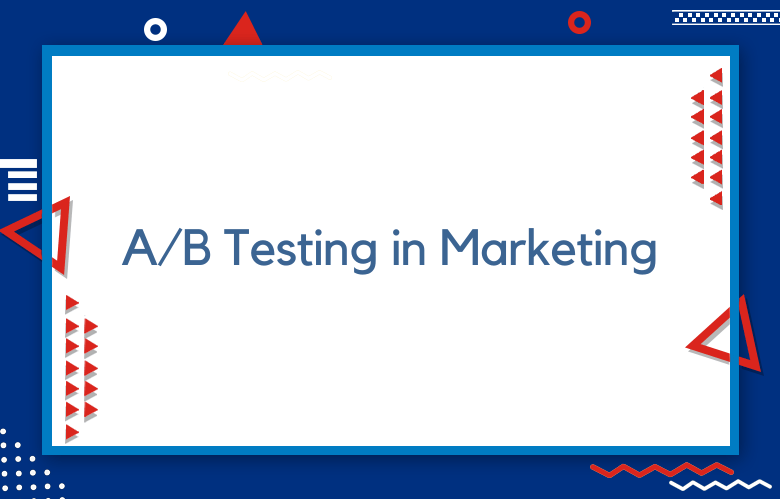Spatial Intelligence for Marketing Mastery

Spatial intelligence for marketing is a game-changer. It blends creativity with analytics to boost brand visibility. While traditional marketing relies on numbers, spatial intelligence taps into visual data, consumer behavior, movement analytics, and geographic search. This approach helps businesses understand their audience in a whole new way.
Key Takeaways
- Spatial intelligence helps marketers understand how customers interact with spaces, which can improve customer experiences and boost sales.
- Use spatial data to enhance marketing strategies by targeting specific locations and tailoring campaigns to local preferences.
- Implement tools like GIS software and heat maps to analyze customer behavior.
- Focus on improving resource allocation by identifying high-traffic areas where marketing efforts will be most effective.
- Stay aware of ethical considerations when using spatial intelligence, ensuring customer privacy and data protection.
- To stay ahead in the competitive marketing landscape, monitor future trends in spatial intelligence, such as augmented reality.
Understanding Spatial Intelligence
Definition
It involves understanding how different elements, including form, relate to a physical space. This skill is crucial for interpreting complex datasets.
People with solid spatial intelligence can quickly identify patterns and trends. Using spatial analytics, they can analyze how various factors influence one another within a specific geographic context. This ability is essential for effective decision-making in marketing.
Decision-Making Enhancement
Integrating geographic context into analysis enhances decision-making. Spatial insights, including geospatial data streams, provide marketers with valuable information about their target audience. By using geospatial data, businesses can understand where their customers are located.
This understanding helps companies tailor their strategies effectively. For example, using spatial analytics and geospatial data streams, knowing consumers’ geographic density patterns allows businesses to focus on high-potential areas. This targeted approach increases efficiency and improves marketing outcomes.
Recognizing Patterns
Spatial intelligence plays a critical role in recognizing patterns that influence marketing strategies. Marketers can uncover hidden trends by applying spatial analytics tools and geospatial data streams. These tools help visualize data in ways that reveal important insights.
For instance, businesses can analyze customer behavior based on geospatial data streams. They might discover that certain products sell better in specific regions, allowing them to adjust inventory and marketing campaigns accordingly.
Understanding geographic information systems (GIS) also aids in this process. GIS technology helps marketers assess spatial relationships and geographic features. It enables them to create detailed maps that illustrate customer distribution.
Spatial Data Interpretation Techniques
Effective spatial data interpretation techniques are vital for accurate analysis. Marketers use various methods to process and visualize data, including heat mapping, clustering, and overlay analysis.
Heat mapping shows areas with high concentrations of customers or sales—clustering groups similar to geographic areas based on specific criteria. Overlay analysis combines multiple layers of data for comprehensive insights.
These techniques help identify market opportunities and challenges.
Importance in Modern Marketing
Customer Insights
Spatial intelligence is crucial for understanding customer demographics. Businesses can analyze where their customers live and shop, which helps them identify trends and preferences. For example, a company selling outdoor gear may find that most customers live near parks or hiking trails.
Tailored Marketing
Geographic insights enable businesses to customize their marketing strategies. Companies can focus on specific locations with high demand for their goods and create targeted advertisements based on local interests and needs. For instance, a restaurant chain might promote different menu items in urban areas than rural ones.
Competitive Advantage
Effective use of spatial data provides a competitive edge. Businesses that leverage this data can outperform their competitors. They can pinpoint areas with high foot traffic or potential customers. This information leads to better placement of advertisements and promotions. A retail store, for instance, may choose to open a new location based on a detailed analysis of population density and shopping habits.
Quality Consideration
Quality matters in marketing decisions influenced by spatial intelligence. Companies can assess the reliability of their products in different regions and gather customer feedback based on geographic factors. For example, a tech company might discover that certain features are more prevalent in urban areas due to lifestyle differences.
Multitude of Applications
Spatial intelligence has vast applications. Businesses can use it for market segmentation, site selection, and pricing strategies. Understanding where customers are located allows companies to develop strategies that resonate with local audiences. For example, a clothing brand could offer discounts at stores in neighborhoods with high competition.
Help in Decision-Making
Spatial intelligence helps businesses make informed decisions. Data-driven choices lead to better marketing campaign outcomes. Companies can track the success of their efforts based on location-specific metrics. For example, they might analyze sales data following a targeted advertisement in a particular area.
Enhancing Marketing Strategies
Market Segmentation
Businesses can use spatial intelligence to segment markets effectively. This means analyzing geographic data to understand customer behaviors. For instance, a retailer can identify neighborhoods with the highest demand for specific products. By focusing on these areas, businesses can tailor their marketing strategies.
Retailers gain valuable insights by mapping sales activity. For example, if a store notices high foot traffic in a specific area, it might increase inventory or launch promotions there.
Location-Based Marketing
Location-based marketing is another powerful tool. Companies can implement tactics that resonate with specific consumer groups. Businesses use GPS data to send personalized offers to customers’ mobile devices when they arrive near a store.
For example, a coffee shop could offer discounts to nearby college students during exam weeks. This strategy not only drives sales but also builds customer loyalty. Customers appreciate relevant offers that fit their needs and location.
Optimizing Promotional Activities
Spatial intelligence allows businesses to optimize promotional activities. Analyzing spatial data helps retailers understand how different locations impact sales performance, allowing companies to adjust their marketing campaigns based on this information.
For instance, a clothing retailer might find that summer clothes sell better in coastal areas than inland cities. By focusing advertising efforts on suitable regions, they can maximize their return on investment.
Customer engagement improves when promotions align with local preferences. For example, a bakery might use spatial data to determine famous pastries in specific neighborhoods. Then, it can promote those items more heavily in those areas.
Benefits of Spatial Intelligence
Using spatial intelligence provides several benefits for marketing strategies:
- Increased Sales: Targeted approaches lead to higher conversion rates.
- Better Customer Insights: Understanding local preferences helps tailor offerings.
- Enhanced Decision-Making: Data-driven choices lead to more innovative business moves.
- Competitive Advantage: Businesses stand out by using location-based tactics.
- Improved Engagement: Relevant promotions keep customers interested and loyal.
Tools for Implementation
Software Solutions
Several software solutions make spatial intelligence easier for marketers. Geographic Information Systems (GIS) are vital tools. They help visualize data on maps. Popular GIS platforms include ArcGIS and QGIS.
ArcGIS offers powerful functionalities like data layering and spatial analysis. Marketers can use it to identify target demographics in specific regions. QGIS is an open-source alternative that provides similar capabilities without the cost.
Analytics Platforms
Analytics platforms also play a vital role. Tools like Tableau and Power BI integrate spatial data with business intelligence features. These platforms allow users to create interactive maps and dashboards, and marketers can track consumer behavior across different locations.
Tableau’s mapping capabilities enable users to visualize sales trends geographically. Power BI offers built-in geographic visualizations, making it easy to interpret spatial data.
Machine Learning Tools
Machine learning tools enhance the ability to analyze large datasets. Platforms such as Google Cloud and IBM Watson offer machine learning services. They help marketers predict trends based on geographic data.
These systems can analyze customer data from various sources. Based on these insights, marketers can tailor campaigns to specific areas.
User-Friendly Applications
User-friendly applications simplify spatial analysis for those without technical expertise. Tools like Mapbox and Carto provide intuitive interfaces for creating maps, allowing marketers to visualize geographic trends easily.
Mapbox offers customizable maps that can be integrated into marketing campaigns. Carto focuses on location data analytics and provides detailed insights about market opportunities.
Tracking Capabilities
Tracking capabilities are essential for practical spatial intelligence. Services like Google Analytics and Facebook Insights provide valuable location-based metrics, allowing marketers to monitor user interactions by region.
These tools enable businesses to understand where their customers are coming from, which helps them optimize their marketing strategies.
Public Services Integration
Public services also contribute to spatial intelligence tools. Many local governments offer open data platforms with geographic information. Marketers can access demographic data, land use, and transportation information. Understanding local conditions enhances campaign effectiveness.
Analyzing Customer Behavior
Movement Patterns
Spatial intelligence helps retailers understand customer movement patterns. Businesses can use data analytics techniques to track where customers go in a store or shopping area. This analysis shows which products attract more attention and which areas are less visited.
Retail analytics can provide insights into peak shopping times. For instance, many shoppers visit stores during weekends. Understanding these patterns allows retailers to adjust staffing and inventory accordingly. They can also create targeted promotions based on when customers are most likely to shop.
Geographic Factors
Geographic factors significantly impact purchasing decisions. Local shopping behavior often reflects cultural and economic conditions. For example, consumers in urban areas may prefer convenience over price. In contrast, those in rural areas might prioritize value and selection.
Retailers can use geographic analysis to tailor their marketing strategies. They can identify trends specific to different locations. For instance, a brand may find that a product sells well in one city but not another. This information allows for localized marketing efforts that resonate with each customer base.
High-Value Segments
Spatial data identifies high-value customer segments effectively. Retailers can analyze consumer behavior based on location and shopping habits. This analysis reveals who the top customers are and where they live.
For example, using descriptive analytics, businesses can segment customers by spending levels and focus on those who frequently purchase high-ticket items. This insight helps retailers create personalized marketing campaigns aimed at these valuable customers.
Data Visualization
It transforms complex data into easy-to-read formats, allowing retailers to see trends and patterns quickly through maps and graphs.
Google Analytics offers tools for visualizing web traffic and helps retailers understand online shopping behavior. Combining digital analytics with spatial intelligence gives businesses comprehensive insights into customer preferences.
Actionable Insights
The ultimate goal of analyzing customer behavior is to generate actionable insights. Retailers want clear steps they can take to improve sales and customer satisfaction. Understanding spatial consumer behavior leads to better product placement and effective promotions.
For instance, if data shows that certain products are famous in specific neighborhoods, retailers can stock those items accordingly. They may also run ads targeting those areas based on local preferences.
Improving Resource Allocation
Target Regions
Marketers can optimize marketing budgets by targeting specific regions. Focusing on areas with higher potential returns increases efficiency. Analyzing population density helps identify these regions. For example, urban areas often have a higher concentration of customers. Companies can adjust their strategies based on this data.
Geographic Performance
Analyzing geographic performance metrics allows businesses to allocate resources more efficiently. Marketers can see which areas perform best by examining sales data across different locations. This analysis reveals patterns that guide decision-making. For instance, if a product sells better in one state than another, resources should shift there. This method reduces wasted spending and maximizes profits.
Streamlining Operations
Using spatial insights streamlines marketing operations. Data analysis allows companies to determine the best locations for advertisements and promotions. For instance, placing ads in high-traffic areas can increase visibility. This approach saves time and cuts costs associated with ineffective marketing strategies.
Decision-Making Process
Spatial intelligence also benefits the decision-making process. Marketers can set specific goals based on geographic data and track performance over time to see what works and what doesn’t. This ongoing evaluation helps refine marketing strategies further.
Logistics Management
Logistics management improves when companies use spatial intelligence. Businesses can plan distribution routes more effectively by analyzing traffic patterns and population density. This planning reduces delivery times and lowers transportation costs. Efficient logistics lead to better customer satisfaction.
Cost Reduction
Another advantage of using spatial intelligence in marketing is cost reduction. Companies save money by focusing on high-potential areas instead of spreading resources thinly across all regions.
Data-Driven Decisions
Data-driven decisions are crucial for successful marketing strategies. Marketers gain valuable insights into customer behavior by collecting and analyzing location-based data. These insights lead to more intelligent resource allocation. For example, if a new product launches in a city with high interest, it may succeed faster.
Types of Analysis
Different types of analysis can help businesses understand where to focus their efforts. Heat maps show where customers are located, while demographic studies provide insight into customer preferences. Combining these analyses gives a clearer picture of market opportunities.
Addressing Challenges and Ethics
Ethical Considerations
Ethical considerations are vital in the collection of spatial data. Companies often gather information about where consumers go and what they do. This data can help improve marketing strategies. However, it raises questions about privacy and consent. Consumers may not fully understand how their location data is used. They might feel uncomfortable knowing companies track their movements. Businesses must ensure they respect consumer privacy.
Marketers should obtain explicit consent before collecting spatial data. This means explaining what data is collected and how it will be used. Clear communication builds trust between companies and consumers and shows businesses value ethical practices.
Challenges
Data privacy challenges arise in spatial analytics. Many consumers worry about who has access to their location information. Data breaches can expose sensitive information, leading to a loss of trust.
Another challenge is ensuring informed consent. Not all consumers are aware of how their data is being used, and some may not read privacy policies or understand them completely. Marketers need to simplify these documents to improve understanding.
Relationships
Building relationships with consumers is essential in spatial intelligence marketing. Transparency plays a vital role in these relationships. Companies should openly share how they use spatial data for marketing purposes.
Companies can create a positive image by being transparent about their practices and providing examples of how spatial intelligence improves customer experiences. For instance, using location data to send personalized offers enhances the shopping experience.
Consumers appreciate when brands prioritize ethical considerations in their marketing strategies. Brands that demonstrate responsibility are more likely to attract loyal customers.
Future Trends and Innovations
Predictive Analytics
Advancements in predictive analytics will shape the future of spatial intelligence in marketing. Companies will increasingly use advanced algorithms to analyze data, providing deeper insights into consumer behavior. Based on location data, businesses will predict where customers will likely shop.
In 2025, experts expect a rise in the use of real-time data from IoT devices. These devices will monitor traffic patterns and public transportation usage. Marketers can then adjust strategies quickly based on this information. This shift will allow brands to target consumers more effectively.
AI Integration
Integrating artificial intelligence (AI) with spatial intelligence will drive innovation. For example, machine learning models can analyze geographical trends over time and reveal how consumer preferences change based on location.
Shortly, AI tools will help marketers create personalized experiences. They will analyze individual behaviors and suggest products based on location. This targeted marketing approach is expected to improve customer engagement significantly.
Consumer Behavior Shifts
Emerging spatial technologies will influence shifts in consumer behavior. As more people use mobile devices, their shopping habits change. Customers now expect instant access to information about nearby stores. They want to know about promotions and availability before visiting.
Studies show that in 2024, consumers will rely heavily on location-based services. These services will guide them to nearby businesses offering what they need. Marketers must adapt to these changes by effectively utilizing spatial analytics.
Industry Impact
The impact of these advancements will be felt across various industries. Retailers will leverage spatial intelligence for better inventory management. They can optimize stock levels based on foot traffic patterns.
Public transportation companies will also benefit from these technologies. They can analyze commuter patterns and adjust routes accordingly. This optimization leads to improved service and customer satisfaction.
Traditional vs. Modern Analytics
Traditional data analytics often lacks the geographical context needed for effective marketing. In contrast, modern spatial analytics provides a comprehensive view of consumer behavior across different regions. This new approach allows businesses to make informed decisions based on actual data.
As industries embrace these changes, the terminology around spatial intelligence will evolve. Terms like “location-based marketing” and “geospatial analysis” will become commonplace.
Summary
Spatial intelligence is a game-changer for your marketing efforts. Leveraging tools and analyzing data can enhance resource allocation and tackle challenges ethically. The future is bright, with innovations on the horizon.
Embrace spatial intelligence to stay ahead. It’s time to elevate your marketing game. Dive into the tools and trends discussed, and start implementing them today. Your competitors are already on it, so don’t get left behind. Explore, adapt, and watch your brand thrive.
Frequently Asked Questions
What is spatial intelligence in marketing?
Spatial intelligence refers to understanding and manipulating spatial relationships. In marketing, it helps businesses visualize customer interactions and optimize location-based strategies.
Why is spatial intelligence important for marketers?
Spatial intelligence enhances decision-making by providing insights into customer behavior and preferences. It allows marketers to tailor campaigns based on geographic data, improving engagement and effectiveness.
How can spatial intelligence enhance marketing strategies?
By leveraging spatial data, marketers can identify trends, target specific demographics, and optimize ad placements. This leads to more personalized campaigns and better ROI.
What tools are available for implementing spatial intelligence?
Popular tools include Geographic Information Systems (GIS), heat mapping software, and location analytics platforms. These tools help visualize data and make informed decisions.
How does spatial intelligence analyze customer behavior?
It examines how customers interact with their environment, including foot traffic patterns and regional preferences. This analysis aids in creating targeted marketing strategies.
Can spatial intelligence improve resource allocation?
Yes, businesses can allocate resources more effectively by identifying high-potential areas and optimizing distribution channels, reducing costs and increasing profitability.
What challenges exist in using spatial intelligence ethically?
Challenges include data privacy concerns and potential biases in data interpretation. Marketers must prioritize transparency and ethical practices to maintain consumer trust.



